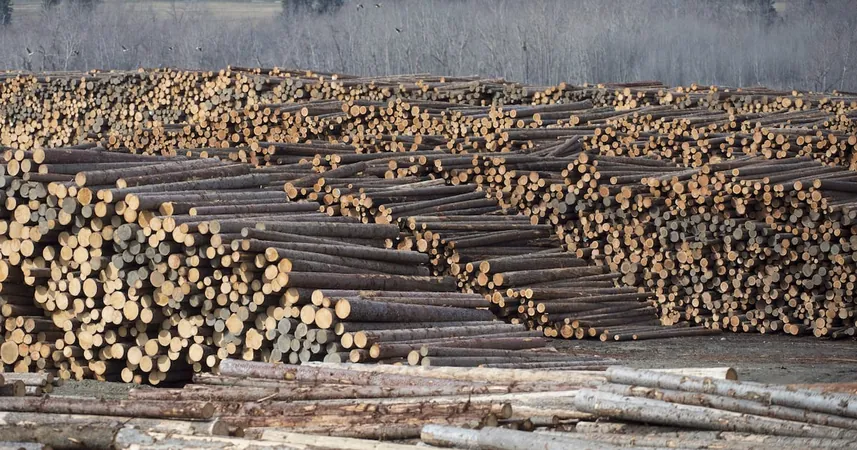
U.S. Doubles Duties on Canadian Lumber to Staggering 34% – What It Means for Housing Costs!
2025-04-07
Author: Michael
Introduction
The U.S. is set to raise duties on Canadian softwood lumber from 14.4% to a staggering 34.45%, adding further strain on material costs for American homebuilders even before President Donald Trump implements additional tariffs. This significant escalation, highlighted in a memo from the U.S. Department of Commerce, threatens to exacerbate an ongoing trade dispute that has persisted for decades.
Background of Tariffs
The current tariffs are rooted in the U.S. government's belief that Canadian sawmills benefit from unfair subsidies, due primarily to the majority of forests in Canada being owned by provincial governments. The U.S. claims that these governments set low “stumpage” fees—prices Canadian logging companies pay for timber—which enables them to undersell their American competitors. However, Canada vehemently disputes these assertions, with Kurt Niquidet, president of the British Columbia Lumber Trade Council, emphasizing that Canada’s stumpage system is based on competitive market principles.
Impact on Home Builders
Amidst threats of new tariffs from Trump, the home construction sector is sounding alarms. Builders say higher tariffs will lead to inflated housing costs, placing an even greater burden on American buyers, especially in a time when home affordability is already a heated issue. British Columbia’s Premier David Eby expressed his concerns, labeling these new duties as an “attack on forest workers and British Columbians.” He pointed out the irony in American voters supporting a president who promised to lower costs, only to face escalating prices.
Broader Trade Tensions
The conflicts surrounding lumber tariffs stem from broader tensions in U.S.-Canada trade relations, particularly after the renewal of the U.S.-Mexico-Canada Agreement (USMCA). In addition to lumber, U.S. tariffs on steel, aluminum, and automobile imports from Canada continue to strain bilateral trade.
Economic Consequences for Canada
Canadian provinces like British Columbia and Quebec play a vital role in lumber production, and the new tariffs could deepen the economic crisis in these regions. As they face heightened pressures from rising input costs and natural disasters like wildfires and pest outbreaks that have devastated vast swathes of forests, many industry executives are losing hope. Frederic Verreault, vice president at Les Chantiers de Chibougamau, a major wood processing company in Quebec, lamented the untenable situation, noting that prices for construction materials, such as two-by-fours, have plummeted from over $10 in 2022 to around $3 now despite rising production costs.
Conclusion
As this trade battle escalates, the long-term implications for both Canadian and U.S. markets remain uncertain. Construction costs may climb even higher, potentially disrupting housing markets across North America and leading to job losses in both countries. As homeowners and builders brace themselves, it raises the question: will America’s desire for economic independence lead to greater financial burdens for its own citizens? Stay tuned for developments in this ongoing trade saga!









 Brasil (PT)
Brasil (PT)
 Canada (EN)
Canada (EN)
 Chile (ES)
Chile (ES)
 Česko (CS)
Česko (CS)
 대한민국 (KO)
대한민국 (KO)
 España (ES)
España (ES)
 France (FR)
France (FR)
 Hong Kong (EN)
Hong Kong (EN)
 Italia (IT)
Italia (IT)
 日本 (JA)
日本 (JA)
 Magyarország (HU)
Magyarország (HU)
 Norge (NO)
Norge (NO)
 Polska (PL)
Polska (PL)
 Schweiz (DE)
Schweiz (DE)
 Singapore (EN)
Singapore (EN)
 Sverige (SV)
Sverige (SV)
 Suomi (FI)
Suomi (FI)
 Türkiye (TR)
Türkiye (TR)
 الإمارات العربية المتحدة (AR)
الإمارات العربية المتحدة (AR)